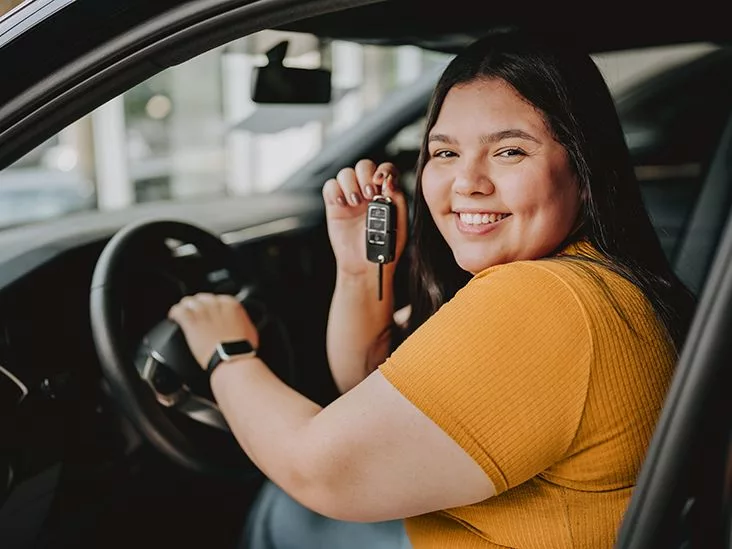If you’ve ever wondered whether your diabetes could be putting you behind the wheel in danger, the short answer is: it can, but only if you let it. By keeping your blood sugar stable, watching your vision, and staying aware of nerve‑related sensations, you can drive safely and confidently.
Below you’ll find the practical facts, real‑world tips, and the legal basics you need to protect yourself and your license. Think of this as a friendly road‑trip guide—one that helps you stay in control, no matter how the road (or your glucose) twists and turns.
Blood Sugar Matters
Glucose is the fuel your brain and muscles need to work properly. When levels swing too low or too high, driving can feel like piloting a car with a fogged windshield.
What does hypoglycemia feel like while driving?
Low blood sugar often starts with subtle signs: shaky hands, a racing heartbeat, or a sudden urge for sweets. Imagine trying to hit the brakes while your hands are trembling—reaction time drops dramatically. According to a 2010 study, drivers with hypoglycemia have a 12‑19% higher risk of motor‑vehicle accidents.
How does hyperglycemia affect concentration?
High glucose can leave you feeling sluggish, thirsty, and even a little blurry‑eyed. Think of it as driving through a heat‑wave: your mind fogs, and you’re less likely to notice sudden hazards.
What glucose range is “safe” before you start a trip?
A good rule of thumb is to aim for 90‑180 mg/dL. Test your meter about 30 minutes before you leave, note the number, and have a quick snack if you’re below 90.
Can a glucose roller‑coaster increase crash risk?
Yes. Rapid swings overload the brain’s decision‑making circuits. The NHTSA DriveWell handout warns that “low glucose can impair judgment and reaction time.” Keeping a steady level is the best insurance policy.
Vision and Diabetes
Driving is a visual sport. Anything that blurs the view—whether it’s a cataract or diabetic retinopathy—can turn a routine commute into a risky gamble.
Which eye complications matter most for drivers?
Retinopathy, macular edema, and cataracts are the big three. Retinopathy damages the tiny blood vessels in the retina, often causing spots or floaters. Macular edema swells the central part of the retina, reducing sharpness right where you need it most—your “road‑center.” Cataracts cloud the lens, creating glare that’s especially nasty at night.
How often should you get a driving‑related eye exam?
Most eye specialists recommend a dilated exam at least once a year, plus an extra check before a new license or renewal. A quick look at your prescription can catch problems before they affect your miles.
Can temporary vision changes (e.g., glare) be managed?
Polarized sunglasses, anti‑glare windshield wipers, and keeping your windshield clean can dramatically cut glare. A friend of mine, John, a 52‑year‑old truck driver, swapped his regular lenses for polarized ones and hasn’t had a single night‑time “near‑miss” since.
When must you report vision loss to the DMV?
Most states require you to disclose any vision condition that can’t be corrected with glasses or contacts. Failing to do so can lead to fines or even license suspension.
What does the road‑test look like for someone with vision issues?
The standard test includes a visual‑acuity check (the eye chart) and a peripheral‑field test (checking side vision). If you wear glasses or contacts, bring them along—you’ll need them for the test and for everyday driving.
Neuropathy and Driving
Peripheral neuropathy is like driving with shoes that have soggy socks—your feet don’t feel the pedals the way they should.
How does loss of feeling in feet/hands affect pedal control?
When your toes or fingers can’t sense pressure, you might hesitate on the brake or clutch. In a split‑second emergency, that hesitation can be the difference between a safe stop and a crash.
What are the warning signs of dangerous neuropathy?
Look for persistent numbness, tingling, or a “pins‑and‑needles” sensation that doesn’t go away after a few minutes. If you notice that you’re pressing the brake harder than usual, it’s time to get checked.
Can assistive devices help?
Absolutely. Pedal extensions, hand‑controlled accelerators, and steering‑wheel knobs can restore confidence. A certified driver‑rehabilitation specialist can assess which adaptations fit your car.
When should you tell a licensing authority about neuropathy?
If you can’t feel the brake pedal within two seconds of pressing it, most DMVs consider that a reporting condition. Better to be proactive than face a penalty later.
Case study: Pedal‑assist success story
Maria, a 48‑year‑old accountant with moderate neuropathy, tried a pedal‑extension kit. After a four‑week trial and a re‑evaluation with her state’s DMV, she kept her license and now drives without anxiety.
Legal and Licensing
Every state has its own playbook, but the core principles are the same: safety first, transparency second.
| State | Medical Reporting Required? | Notes |
|---|---|---|
| California | Yes | Physician must certify stable glucose for 6 months. |
| Texas | No (unless insulin‑treated) | Insulin users must report severe hypoglycemia. |
| New York | Yes | Annual DMV‑approved vision exam required. |
| Florida | No | Only commercial licenses need reporting. |
Do all states require medical reporting for diabetes?
Not all—but many do, especially if you use insulin or have a history of severe hypoglycemia. Check your local DMV website for the exact wording.
What are the specific rules for commercial drivers?
Commercial drivers need a Department of Transportation (DOT) medical certificate. Since 2018, the ADA allows people with diabetes to obtain a commercial driver’s license (CDL) provided they meet glucose‑control standards and undergo regular check‑ups.
What happens if you hide a diabetes‑related problem?
Concealing a condition can lead to fines up to $1,000 and, if an accident occurs, possible criminal charges. The UK’s DVLA is particularly strict—failure to report severe hypoglycemia can result in a hefty penalty (see DVLA guidance).
Can you keep your license if you’ve had severe hypoglycemia?
Yes, but you’ll need to demonstrate a period—usually six months—without severe episodes, plus a doctor’s clearance.
How does the “driving test” accommodate vision or neuropathy issues?
Most testing centres will allow you to bring adaptive equipment, such as hand‑controls, and will perform a standard vision check. If you’re unsure, call ahead and request accommodations.
Everyday Driving Strategies
Think of these habits as your personal GPS for safe driving—guidance that keeps you on the right route.
What’s a pre‑drive glucose routine?
- Test your blood sugar 30 minutes before you leave.
- Record the number in a small log or phone app.
- If under 90 mg/dL, eat a quick snack (e.g., glucose tablets, a piece of fruit) and re‑test.
- Keep a stash of fast‑acting carbs in your glove compartment.
How to handle a low‑sugar event while on the road?
Pull over safely, check your meter, treat with 15‑20 g of carbs (a juice box or a few hard candies), wait 15 minutes, then re‑check. Only resume driving when your level is back above 90 mg/dL.
Should you monitor glucose during long trips?
Yes. Set a reminder to test every two hours, or use a continuous glucose monitor (CGM) that alerts you via your phone. Many newer CGMs sync with smartphone apps that can even flash a warning on your car’s Bluetooth display.
What snacks are best for the car?
Portable, non‑messy options work best: fruit leathers, pretzels with a small peanut‑butter packet, or a mini box of raisins. Avoid sugary drinks that cause spikes followed by crashes.
How to stay hydrated and avoid hyperglycemia fatigue?
Drink water regularly—aim for at least 8 cups a day. Dehydration can push glucose levels higher and make you feel drowsy, increasing accident risk.
When to skip driving altogether?
If your glucose is below 70 mg/dL, you feel dizzy, have blurred vision, or have experienced a recent severe hypoglycemic episode, it’s safest to postpone the trip.
Technology aids
Top apps like MySugr and Glucose Buddy let you log readings with a tap, set alerts, and even share data with your healthcare team. Pair them with a Bluetooth meter, and you’ll have a real‑time dashboard right on your dash.
Professional Help Guide
Sometimes you need a co‑pilot—an expert who can help you navigate the complexities of diabetes and driving.
What red‑flag symptoms require immediate medical attention?
Severe hypoglycemia with loss of consciousness, sudden vision blackout, or unexplained weakness in your limbs. Call emergency services right away.
How often should you see your endocrinologist about driving?
At least once a year, or any time you change medication, experience new symptoms, or have a recent hypoglycemic event.
Should a driver‑rehabilitation evaluation be part of diabetes care?
Yes. Certified Driver Rehabilitation Specialists (CDRS) can assess your reaction times, visual fields, and recommend adaptive equipment if needed.
What role does a diabetes educator play in safe driving?
Educators can teach you how to adjust insulin doses for road trips, manage stress‑induced glucose spikes, and create a personalized “driving‑day” plan.
Legal counsel: when to consult an attorney?
If you’ve been denied a license or faced discrimination, the ADA offers protections for drivers with diabetes. An attorney can help you navigate appeals and ensure your rights are protected.
Balancing Risks and Benefits
Driving gives freedom, independence, and a sense of control—things that matter deeply for anyone living with diabetes. The risks are real, but they’re manageable with the right knowledge and habits.
Remember, most people with well‑controlled diabetes drive safely every day. The key is to stay proactive: monitor your glucose, protect your vision, keep an eye on nerve health, and be honest with licensing authorities.
What’s your biggest challenge when you get behind the wheel? Have you found a tip that’s saved you a stressful moment? Share your story in the comments—your experience might be the lifeline another driver needs.
If you have any questions or need clarification on any of the points above, feel free to reach out. We’re all in this journey together, and together we can keep the road safe for everyone.


















Leave a Reply
You must be logged in to post a comment.